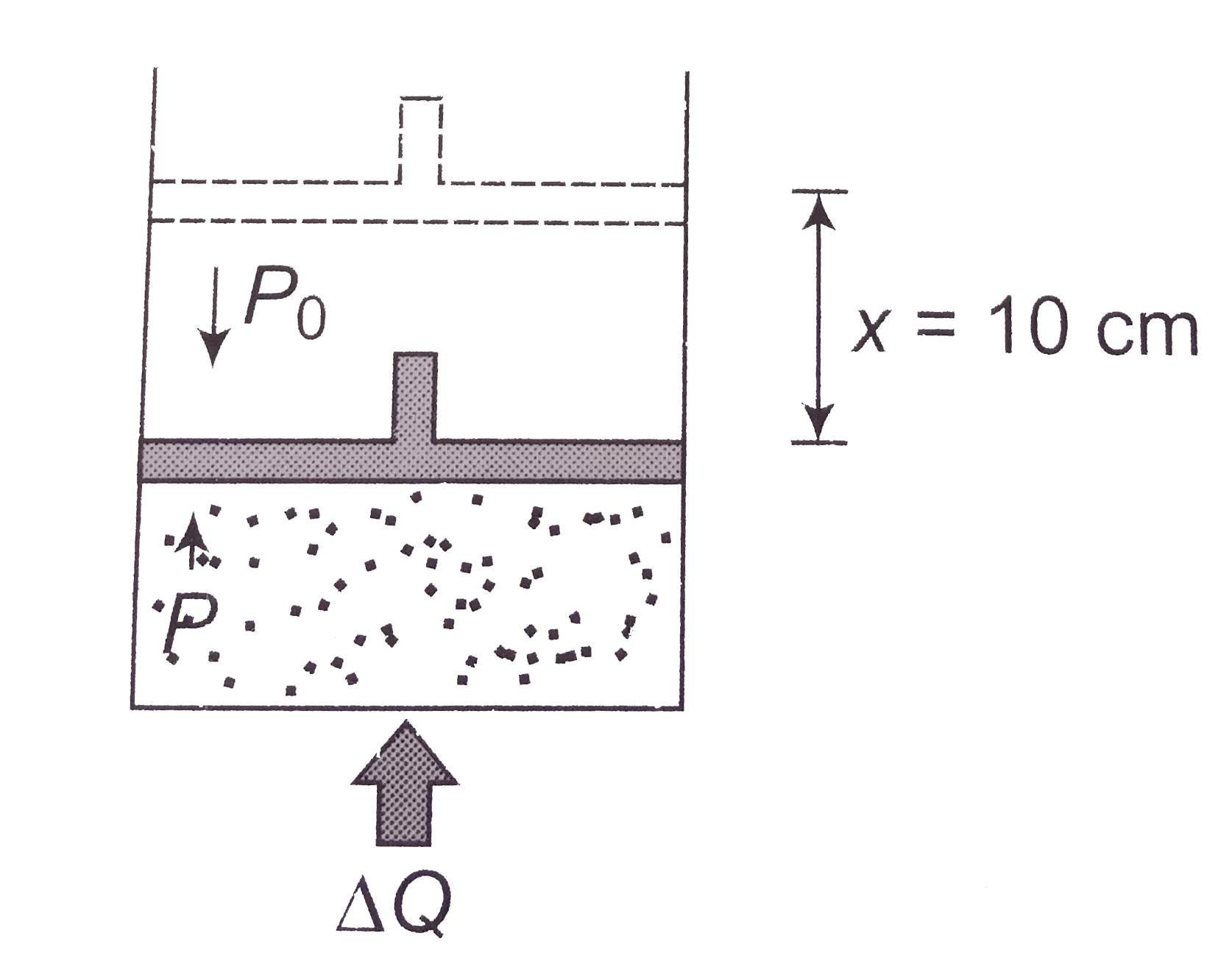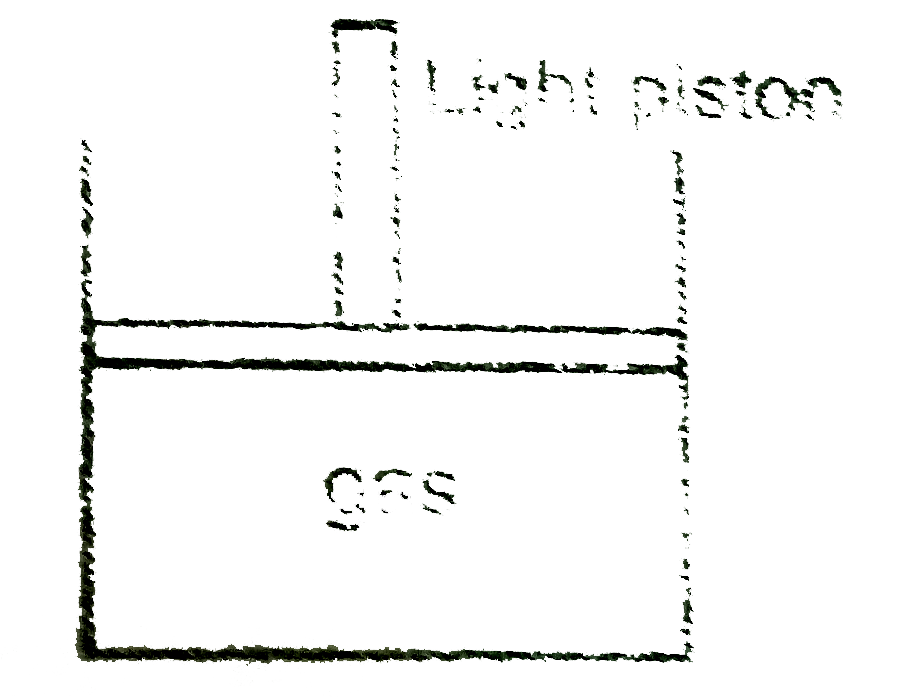A gas is enclosed in a cylindrical vessel fitted with a frictionless piston. The gas is slowly heated for some time. During the process, 10 J of heat is supplied and the piston is found to move out 10 cm. The area of cross-section of the cylinder =4cm2 and the atmospheric pressure =100kPa.

Slowly i.e. pressure is constant
P=P0 atmosheric pressure
ΔW=PΔV=P0Ax
=100×103×4×10−4×0.1
=4J
From first law of thermodynamics
ΔQ=ΔU+ΔW
10=ΔU+4
ΔU=6j
Topper's Solved these Questions
Similar Questions
A gas is enclosed in a cylindrical vessel fitted with a frictionless piston.the gas is slowly heated for some time. During the process, 10 J of heat is suopplied and the piston is found to move out 10cm. Find the increase in the internal energy of the gas , the area of cross section of the gas, the area of cross section of the cylinder=4 cm^(4) and the atmospheric pressure =100kPa.
View SolutionIn given figure, gas is slowely heated for sometime. During the process, the increases in internal energy of the gas is 10J and the piston is found to move out by 25cm, then find the amount of heat supplied. The area of cross-section of cylinder =40cm2 and atmospheric pressure 100kPa

View SolutionTwo moles of nitrogen gas is kept in a cylinder of cross-section area 10cm3. The cylinder is closed by a light frictionless piston. Now the gas is slowly heated such that the displacement of piston during process is 50cm, find the rise in temperature of gas when 200J of heat is added in it. (Atmospheric pressure =100kPa,R=25/3J/mol−K)
View SolutionThe internal energy of monoatomic ideal gas is 1.5 nRT. One mole of helium is kept in cylinder of cross section 8.5cm2. The cylinder is closed by a light frictionless piston. The gas is heated slowly in a process during which a total of 42 J heat is given to the gas. If the temperature rises through 2∘C find the distance moved by the piston. Atmospheric pressure=100kPa
View SolutionThe internal energy of a monatomic ideal gas is 1.5 nRT. One mole of helium is kept in a cylinder of cross section 8.5cm2. The cylinder is closed by a light frictionless piston. The gas is heated slowly in a process during which a total of 42J heat is given to the gas. if the temperature rise through 2(0)C, find the distance moved by the piston. atmoshphere pressure =100 kPa.
View Solution2.00 mol of a monatomic ideal gas (U=1.5nRT) is enclosed in an adiabatic, fixed , vertical cylinder fitted with a smooth, light adiabatic piston.the piston is connected to a vertical spring of spring constant 200Nm−1 as shown in .the area of cross section of the cylinder is 20.0cm2. initially, the spring is at its natural length and the temperature of the gas is at its natural length and the temperature of the gas is 300 K. the atmosphere pressure is 100 kPa. the gas is heated sloewly for some time by means of an electric heater so as to move the poston up through 10 cm. find (a) the work done by the gas (b) the final temperature of the gas and (c ) the heat supplied by the heater.

View SolutionA simple of gas present in a cylinder fitted with a frictionless piston expands against constant pressure of 1atm from a volume fo 2L to 12L. During the process, it absorbs 600J of heat from the surroundings. Calculate the change in internal energy of the system.
View SolutionAn ideal gas is kept in a long cylindrical vessel fitted with a frictionless piston of cross-sectional area 10cm2and weight 1kg. The length of the gas column in the vessel mow taken into a spaceship revolving round the earth as satellite. The air pressure in the spaceship is amintained at 100kPa. Find the length of the gas column in the cylinder.
View SolutionTwo moles of an ideal gas are contained in a vertical cylinder with a frictionless piston. The piston is slowly displaced so that expansionin gas is isothermal at temperature T0=400K. find the amount of work done in increasing the volume to 3 times.t ake atmospheric pressure =105N/m2
View SolutionA gas is contained in a vessel fitted with a movable piston. The container is placed on a stove. A total of 100 cal of heat is given to the gas and the gas does 40 J of work in the expansion resulting from heating. Calculate the increase in internal energy in the process.
View Solution
